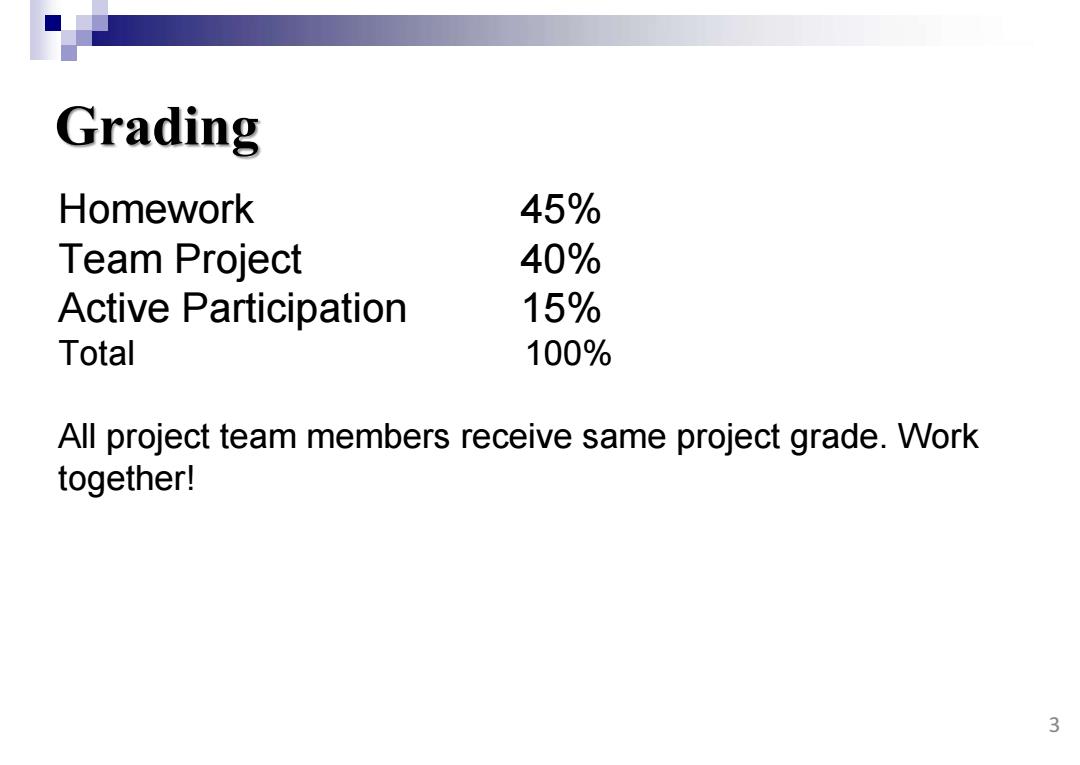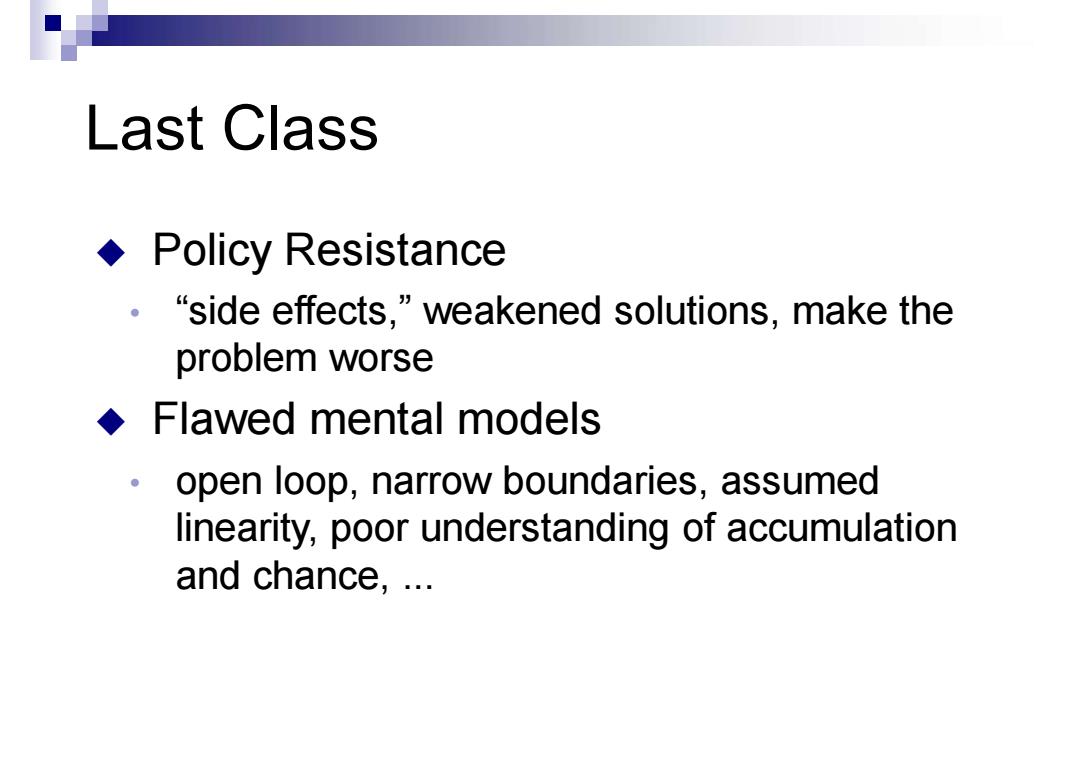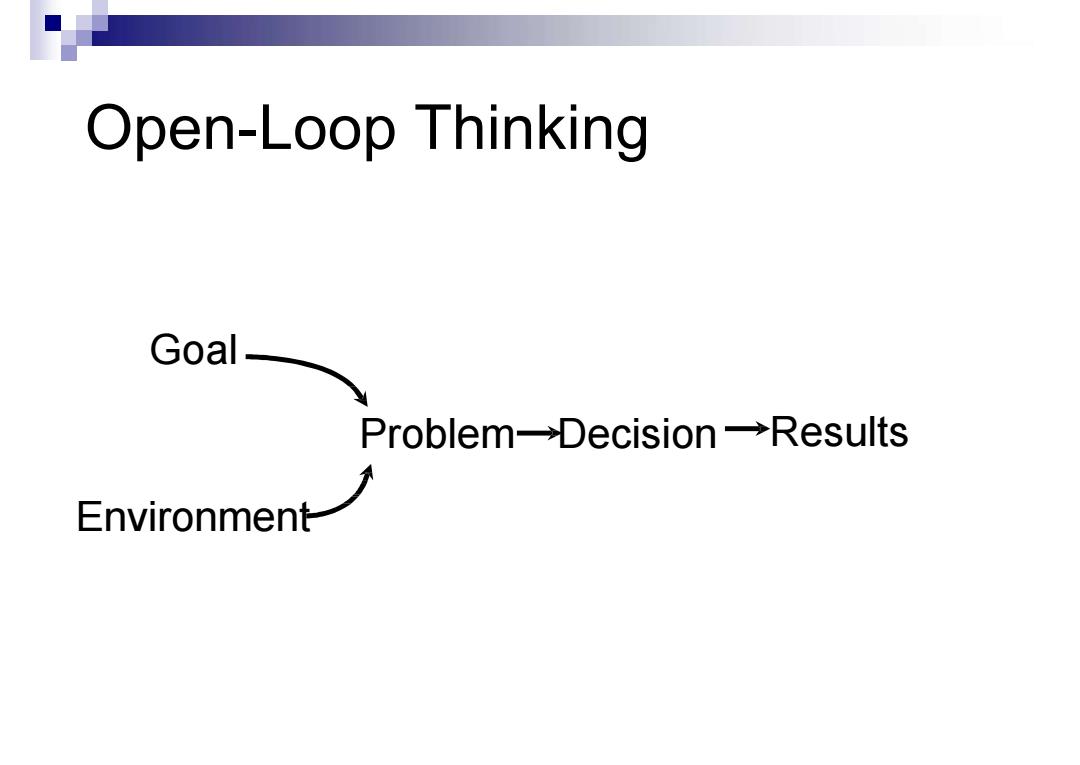
Welcome to System Dynamics Huang Dan 28Feb,2017 上游充通大¥ Shanghai Jiao Tong University
Welcome to System Dynamics Huang Dan 28 Feb, 2017

Course Overview: Four main sections: ·Basic tools ● Growth strategies Business models System Dynamics in Action Major themes: The good uses of models and becoming a good model consumer Systems thinking and System Dynamics:Intuition and modelling skills Group facilitation,organizational learning,getting results
Four main sections: • Basic tools • Growth strategies • Business models • System Dynamics in Action Major themes: • The good uses of models and becoming a good model consumer • Systems thinking and System Dynamics: Intuition and modelling skills • Group facilitation, organizational learning, getting results Course Overview:

Grading Homework 45% Team Project 40% Active Participation 15% Total 100% All project team members receive same project grade.Work together! 3
3 Grading Homework 45% Team Project 40% Active Participation 15% Total 100% All project team members receive same project grade. Work together!

Faster-Better-Cheaper? NASA The NASA New Millennium Program: Faster,Better,Cheaper craft were small and most of them tested new technologies.Of the 16 projects undertaken,six had failed as of January 1,2000.The resulting success rate,a paltry 63 percent,was significantly below spacecraft normand well below the expectations for reliability that advocates placed on the initiative. Howard E.Mccurdy,Faster,Better,Cheaper:Low-Cost Innovation in the U.S.Space Program,The John Hopkins University Press,2001. 4
4 Faster-Better-Cheaper? Howard E. Mccurdy, Faster, Better, Cheaper: Low-Cost Innovation in the U.S. Space Program, The John Hopkins University Press, 2001. The NASA New Millennium Program: Faster, Better, Cheaper

Last Class ◆Policy Resistance 。“side effects,”weakened solutions,make the problem worse ◆Flawed mental models open loop,narrow boundaries,assumed linearity,poor understanding of accumulation and chance
Last Class Policy Resistance • “side effects,” weakened solutions, make the problem worse Flawed mental models • open loop, narrow boundaries, assumed linearity, poor understanding of accumulation and chance,

What is systems thinking? Systems thinking is a perspective of seeing and understanding systems as wholes rather than as collections of parts.A whole is a web of interconnections that creates emerging patterns. big picture cause-and-effect relationships 人心一
What is systems thinking? Systems thinking is a perspective of seeing and understanding systems as wholes rather than as collections of parts. A whole is a web of interconnections that creates emerging patterns. big picture cause-and-effect relationships

System Dynamics What is it? A tool for learning in complex systems What is it good for?
System Dynamics What is it? A tool for learning in complex systems What is it good for?

Open-Loop Thinking Goal Problem→Decision→Results Environment
Open-Loop Thinking Goal Environment Problem Decision Results

Feedback Goal Problem-Decision Environment Side effects
Feedback Goal Environment Side effects Problem Decision

Real. World Decisions Information Feedback
Real World Information Feedback Decisions